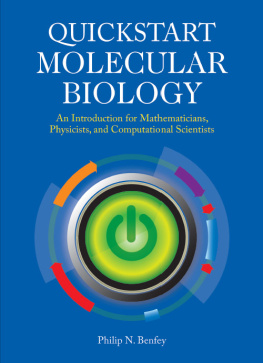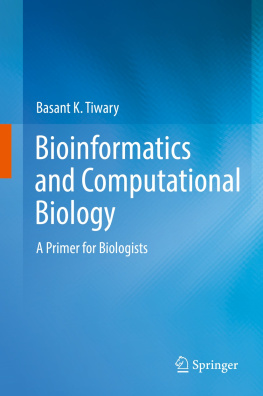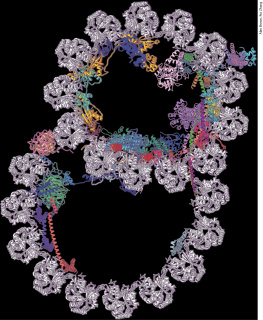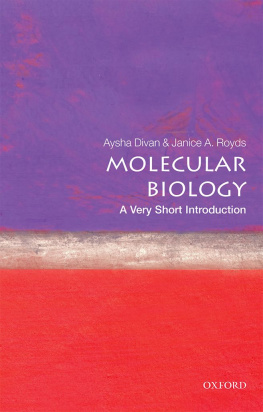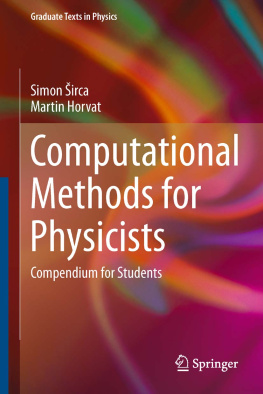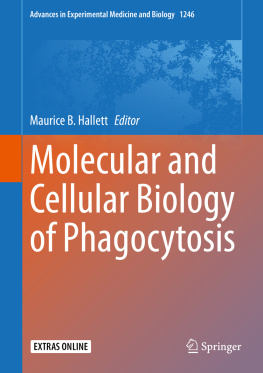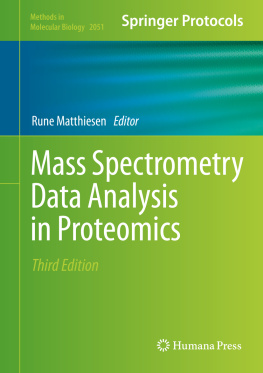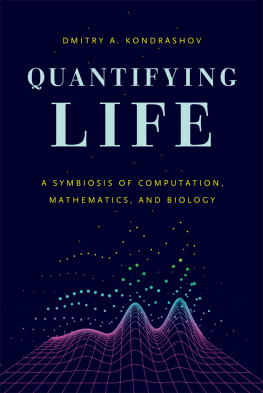Quickstart Molecular Biology
An Introduction for Mathematicians, Physicists, and Computational Scientists
ALSO FROM COLD SPRING HARBOR LABORATORY PRESS
A Genetic Switch, Third Edition, Phage Lambda Revisited
Experimental Design for Biologists
Genes and Signals (Kindle only)
Mammalian Development: Networks, Switches, and Morphogenetic Processes
RNA Worlds: From Life's Origins to Diversity in Gene Regulation
Signal Transduction: Principles, Pathways, and Processes
Quickstart Molecular Biology
An Introduction for Mathematicians, Physicists, and Computational Scientists
Philip N. Benfey
Duke University and the Howard Hughes Medical Institute
| COLD SPRING HARBOR LABORATORY PRESS Cold Spring Harbor, New York www.cshlpress.org |
Quickstart Molecular Biology
An Introduction for Mathematicians, Physicists, and Computational Scientists
2014 by Cold Spring Harbor Laboratory Press, Cold Spring Harbor, New York
All rights reserved
Publisher | John Inglis |
Acquisition Editor | Richard Sever |
Director of Editorial Development | Jan Argentine |
Developmental Editor | David H. Hatton |
Project Manager | Inez Sialiano |
Permissions Coordinator | Carol Brown |
Production Editor | Kathleen Bubbeo |
Production Manager | Denise Weiss |
Cover Designer | Pete Jeffs |
Library of Congress Cataloging-in-Publication Data
Benfey, Philip N.
Quickstart molecular biology: an introductory course for mathematicians, physicists, and computational scientists / Philip N. Benfey, Duke University.
pages cm
Summary: This book is an introductory course in molecular biology for mathematicians, physicists, and engineers. It covers the basic features of DNA, proteins, and cells but in the context of recent technological advances, such as next-generation sequencing and high-throughput screens, and their applications. This enables readers to move rapidly from the basics to an understanding of cutting-edge research in systems biology and genomics--Provided by publisher.
Includes bibliographical references and index.
ISBN 978-1-62182-033-8 (hardback) -- ISBN 978-1-62182-034-5 (paperback) -- 978-1-621824-07-7 (ePub3) -- 978-1-621824-08-4 (Kindle-Mobi)
1. Molecular biology--Textbooks. I. Title.
QH506.B456 2014
572.8--dc23
2014007639
All World Wide Web addresses are accurate to the best of our knowledge at the time of printing.
Authorization to photocopy items for internal or personal use, or the internal or personal use of specific clients, is granted by Cold Spring Harbor Laboratory Press, provided that the appropriate fee is paid directly to the Copyright Clearance Center (CCC). Write or call CCC at 222 Rosewood Drive, Danvers, MA 01923 (978-750-8400) for information about fees and regulations. Prior to photocopying items for educational classroom use, contact CCC at the above address. Additional information on CCC can be obtained at CCC Online at www.copyright.com.
For a complete catalog of all Cold Spring Harbor Laboratory Press publications, visit www.cshlpress.org.
Contents
T HERE ARE MANY PEOPLE TO thank when a book of this nature makes it to publication. Gary Carlson, former editor at Prentice Hall, commissioned the book and then was remarkably patient as it arrived in dribs and drabs. He provided insightful editing and guidance, and, when he announced his upcoming retirement, I realized I better finish it up. The editorial staff at Cold Spring Harbor Laboratory Press have been highly professional and efficient. Courtney Babbitt and Steve Haase contributed portions of the chapters on human evolution and biological oscillators, respectively, and Heidi Cederholm wrote a first draft of the glossary. The students in my class at Duke used earlier versions of this work as a textbook and provided helpful comments and feedback. During the six-plus years from conception to completion of this book, research in my laboratory was funded from a number of sources, including the National Institutes of Health (NIH), National Science Foundation (NSF), Defense Advanced Research Projects Agency (DARPA), Gordon and Betty Moore Foundation, and Howard Hughes Medical Institute. Finally, my deepest gratitude for the understanding and support of my wife, Elisabeth.
P HILIP BENFEY IS the Paul Kramer Professor of Biology and an Investigator of the Howard Hughes Medical Institute at Duke University, Durham, North Carolina, USA. His research focuses on plant developmental genetics and genomics. He is a fellow of the American Association for the Advancement of Science and a member of the U.S. National Academy of Sciences. Dr. Benfey received his Ph.D. from Harvard University and a DEUG (Diplome d'Etudes Universitaire Generale) from the University of Paris.
1.1 Why This Book?
Shortly after I arrived at Duke, I met with an engineer who expressed an interest in biological networks. From that chance encounter developed a regular meeting of researchers who shared this interest. The biological networks group became the nucleus for a successful proposal to the National Institutes of Health to become a national Center for Systems Biology.
What characterized this group of researchers from the beginning was a nearly equal division among those trained as experimental biologists and those trained in one of the more quantitative scientific disciplines: mathematics, computer science, statistics, physics, and engineering. We realized that we would have to develop new means of educating each other across what is a fairly sizeable knowledge and cultural divide. It was not sufficient to tell our colleagues that they should read the standard textbooks in our respective fields. For the biologists, this would have meant using quantitative skills that had rarely been robustly acquired. For the theorists, it would have meant dealing with the standard biology textbooks, which tend to be off-putting in their size and level of detail. We experimented with various formats, and this book is the result of an approach that seemed to work for people who have backgrounds in the quantitative sciences but have had little or no formal training in biology. It has been used in a course at Duke University in which the students primarily major in electrical engineering, computer science, or mathematics.
1.2 How Is the Book Organized?
The goal of this book is to take the student quite rapidly from basic biological information to an understanding of cutting-edge technology and the results obtained from use of that technology. Each of the first four chapters is organized in a similar manner, beginning with the fundamentals of biological structure and how that structure is crucial for function. It then moves to a description of advanced-technology platforms used to analyze the biological entity. A final section addresses how data generated by each technology platform are analyzed.

